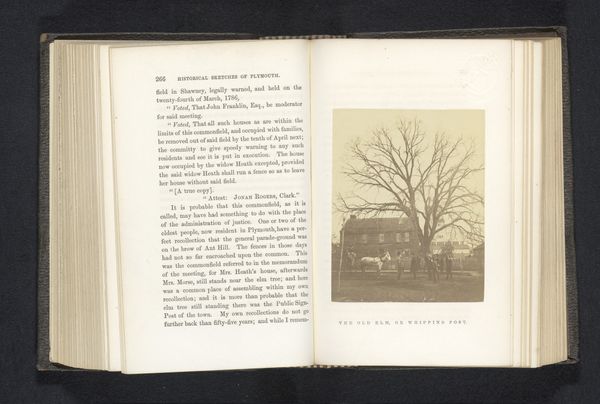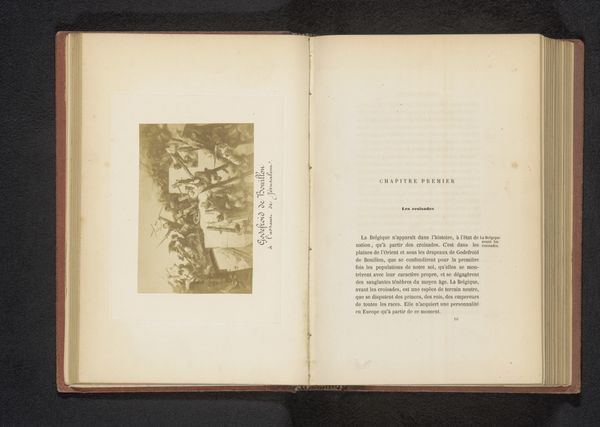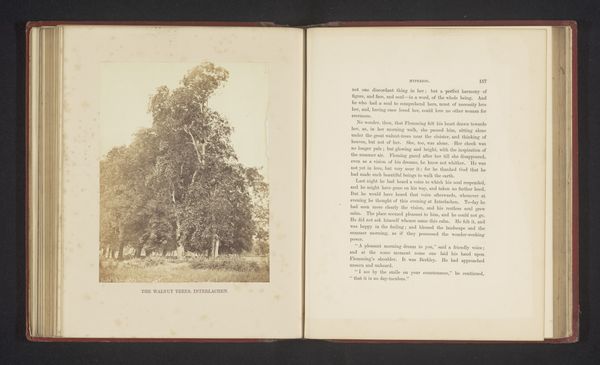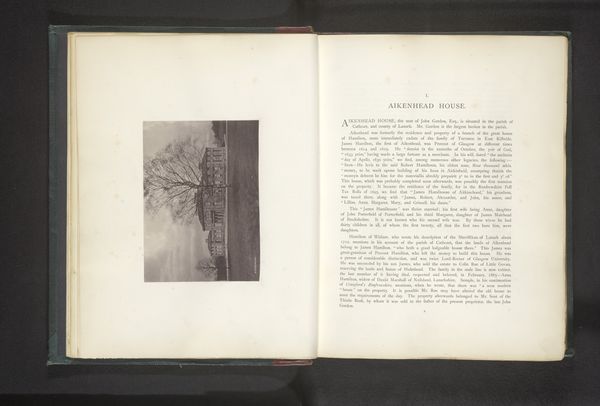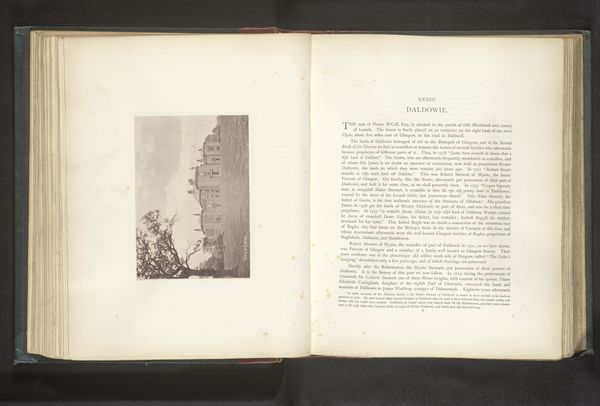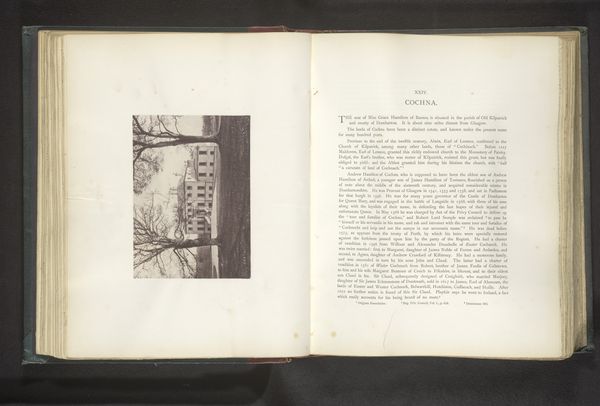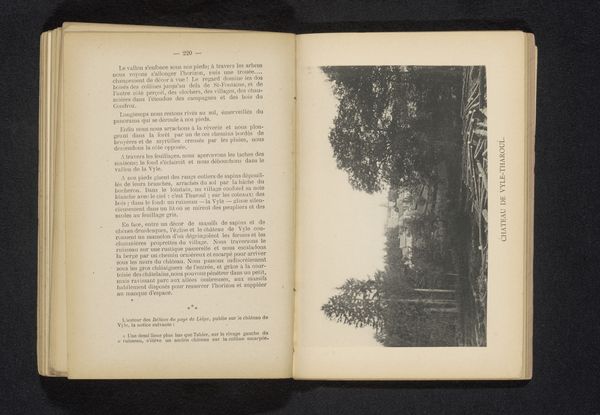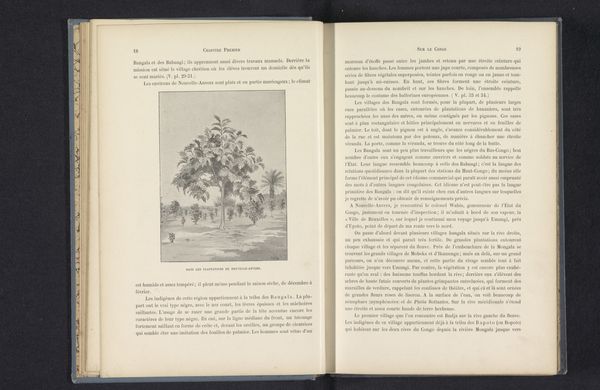
print, photography, albumen-print
# print
#
landscape
#
photography
#
albumen-print
Dimensions: height 88 mm, width 82 mm
Copyright: Rijks Museum: Open Domain
Curator: The work before us is an albumen print dating from around 1870, attributed to Ladmore and Son. It's titled "Gezicht op een zomereik"—"View of a Summer Oak" in Dutch, although the text on the opposite page is in English. Editor: My immediate impression is one of starkness and endurance. The tree’s silhouette, caught in the dormant season perhaps, projects a somber strength. Curator: It's part of a larger collection of photographic prints, housed in an album dedicated to remarkable trees of Herefordshire. We must consider it as a work shaped by prevailing notions of nature as something worth documenting. Editor: It strikes me how the tree acts as a potent symbol across many cultures – the world tree, a connector of earthly and spiritual realms. The photograph freezes a particular moment, but the symbolism embedded in the tree's image resonates far beyond. Note the specific angle. Curator: Indeed, there's an interesting tension here. The scientific impulse to document, paired with, what seems like a desire to make art, a reverence. It makes me wonder about the photographers' social standing and relationship to land ownership during that era, if their lens reproduced class power. Editor: Also consider how photography itself contributes. Albumen printing results in sepia tones, imbuing it with nostalgia and a feeling of timelessness, while its starkness may also act as an image of fragility within these very pages. The details provide meaning. Curator: That makes me consider environmentalism. Perhaps we're also projecting our contemporary concerns back onto a seemingly straightforward image of an impressive tree? Can an image such as this function as a visual form of early eco-activism? Editor: A fitting point. In any event, symbols change. So while it speaks of nature, power, mortality and environmental change now, maybe its intent and context back in the day reflected different cultural ideas. The strength of art lies within such enduring yet changing cultural meanings. Curator: Food for thought. Perhaps in understanding our own situated perspective we find newer perspectives on its context. Editor: A constant re-discovery. Thank you.
Comments
No comments
Be the first to comment and join the conversation on the ultimate creative platform.

